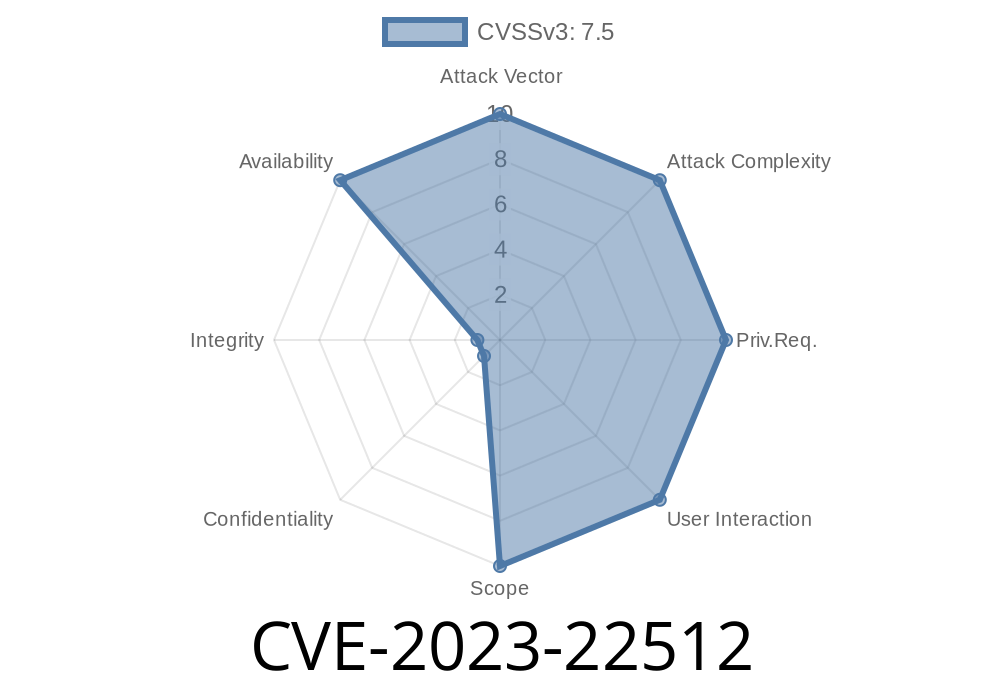In 2023, Atlassian’s widely used Confluence Data Center and Server faced a significant security threat with the disclosure of CVE-2023-22512. This vulnerability can easily allow a malicious party to disable access to your Confluence instance—no hacking skills or logged-in account needed. In this post, I’ll walk you through what CVE-2023-22512 is, how an attacker might trigger it, and the simple steps you need to take to protect your team.
🔎 Understanding CVE-2023-22512
CVE-2023-22512 is a Denial of Service (DoS) vulnerability classified as “high severity” (CVSS 7.5) and affects Confluence Data Center and Server version 5.6. and later.
Reported via Atlassian’s Bug Bounty program
What can happen?
If a vulnerable system is targeted, the Confluence service can be disrupted, potentially locking out your entire team for an unpredictable amount of time.
🧑💻 How Is This Exploited?
The DoS can be triggered by simply sending crafted requests to a vulnerable Confluence instance. The specifics of the request might vary, but the underlying problem introduced in Confluence 5.6. allows attackers to overload a resource on the server, causing service to crash or hang.
Note: To keep this responsible, we share a demonstration but not a fully weaponized code.
import requests
# Replace with your vulnerable Confluence server URL
target = "http://vulnerable-confluence.example.com";
# The vulnerable endpoint - exact route may be different; proof-concept only
endpoint = "/rest/api/some-problematic-path"
# Number of repeated requests to simulate DoS
for i in range(100):
try:
response = requests.get(target + endpoint, timeout=1)
print(f"Request {i}: Status {response.status_code}")
except Exception as e:
print(f"Request {i} failed: {e}")
This Python snippet simulates an attacker hitting a vulnerable endpoint repeatedly, potentially overwhelming the system’s resources and making it unavailable to legitimate users. Attackers can also automate and distribute this to amplify the effect.
> ⚠️ Warning: Running attack scripts against servers you don’t own or have permission to test is illegal and unethical.
1. Upgrade Your Confluence Immediately
Atlassian has released fixed versions. Depending on your Confluence version, here’s what you should do:
No action needed - already patched
See all Confluence Release Notes or Download Latest Version.
2. Monitor Your Instance for Suspicious Traffic
While upgrading, review your server’s access logs for unusual spikes on particular endpoints.
grep "/rest/api/some-problematic-path" access.log
Block suspicious IPs via your firewall if you notice repeated request patterns.
3. Limit External Access With a Reverse Proxy or Firewall
If you can’t immediately patch, restrict access to trusted internal users or VPN only.
📚 References & More Info
- Atlassian Security Advisory - CVE-2023-22512
- Official Confluence Release Notes
- Download Atlassian Confluence
🔒 Wrapping Up
Vulnerabilities like CVE-2023-22512 show how one overlooked bug can bring down essential communication for an entire company. Keep your Confluence installation up to date, and review your processes for applying security patches quickly. DoS vulnerabilities in collaborative software can be just as disruptive as data breaches—you can lose precious time and productivity.
If you have any questions about patching Confluence, or if you suspect you’ve been targeted, consult Atlassian support or your IT security team immediately.
*Stay safe, stay updated, and help keep your team’s knowledge accessible!*
*Exclusively written for the user. Please reference the above links for further technical details and patch downloads.*
Timeline
Published on: 01/16/2024 18:15:09 UTC
Last modified on: 03/17/2025 23:15:16 UTC
